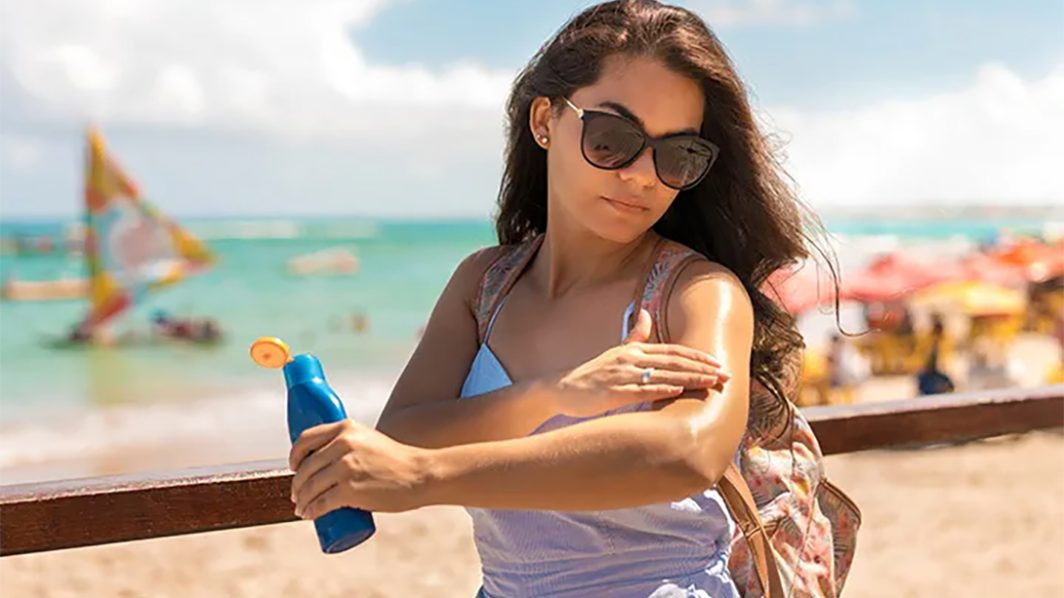
This time of year many people are getting ready for their
summer holidays and spending more time outdoors in the sun.
I live in the South East of England and even here the sun can
be very strong in the summer months. Global warming is
causing the ozone layer to become thinner.Between 1978 and
1985 the the level of ozone in the atmosphere dropped by
2.5%. Ozone offers protection from the sun’s ultra violet
rays.
Skin cancer is on the increase and is becoming a worrying
health problem.Children are most vulnerable as their skin is
thinner than an adults and their risk of getting sunburnt is
much greater.
A lot of people still believe that a tan is a sign of good
health and beauty. in fact it is a sign that the skin is damaged.
Most skin damage resulting in wrinkles is caused by exposure
to the sun’s UVA rays,![]() and often most of the damage is done
and often most of the damage is done
by the age of 21. This may not show up until later in life.
Sunbeds can be even more dangerous as they have mostly UVA
rays which do the most damage. The sun has both UVA and UVB
rays.
The best advice for a healthy, wrinkle free skin is to stay
out of the sun completely, but that can be very difficult
when you’re on holiday.
Stay out of the sun during the hottest time of day when the
sun is at it’s strongest. That is between midday and about
4.00pm in the afternoon.
When you do go out in the sun make sure that you have a good
high protection sun cream, and a wide brimmed hat as well as sunglasses with UVA protection. Apply sun cream 20-30 minutes before you go out.
Even when it’s cloudy the sun’s UV rays can still penetrate.
They can penetrate in water as well, so if you go swimming
make sure that you still put plenty of sun cream on.
When choosing a suncream check the ingredients.
It’s much better to choose one that contains both UVA and UVB
protection,as well as natural ingredients and moisturisers.
There are many different sun creams on the market today but
90% of them contain OMC or octyl methoxycinnamate. This
chemical is used to protect the skin against skin cancer, but
according to tests carried out by scientists it could damage
human cells if it gets into the blood stream.
Other chemicals often present in sun creams are mineral oil
and PABA or benzophenone which may lead to skin and photo
allergenic reactions.
Parabens are used widely in suncreams as a preservative. They
are derived from plant extracts and petroleum. Sensitive
skins may react to this.
However the importance of using sun cream is far greater than
the risk from the chemicals in the cream.
A fake tan may be the safest option for that sun kissed look.
Sunless tanning creams have come a long way in the past few
years from the orange streaky effect that most of them gave.
Eating a diet rich in antioxidants can also help to protect
the skin. Eat plenty of fruit and vegetables especially red
and orange coloured, e.g red peppers, oranges, blueberries,
butternut squash and carrots.




